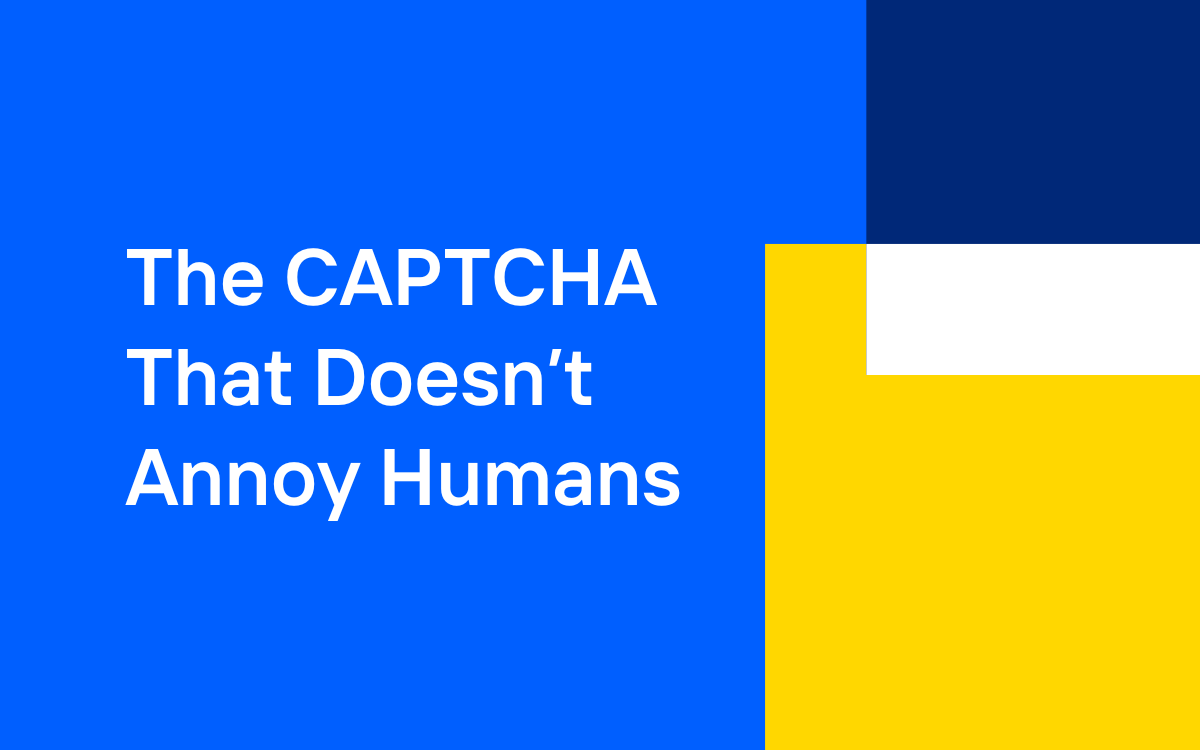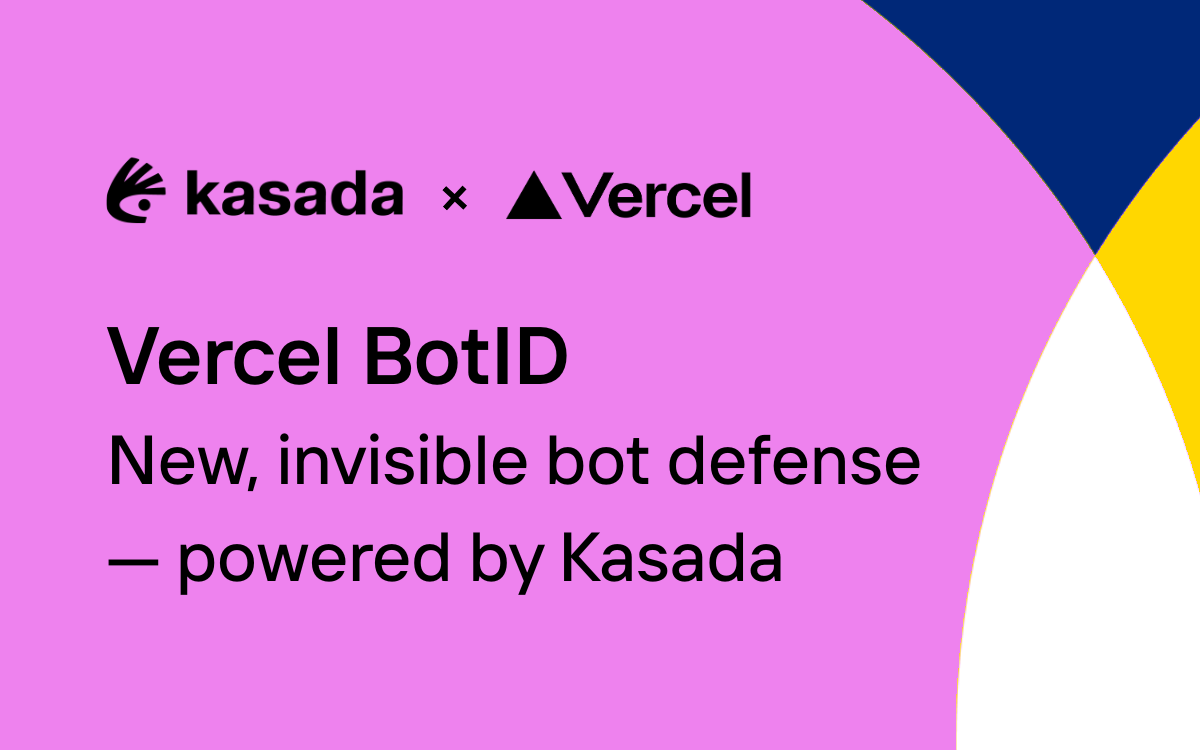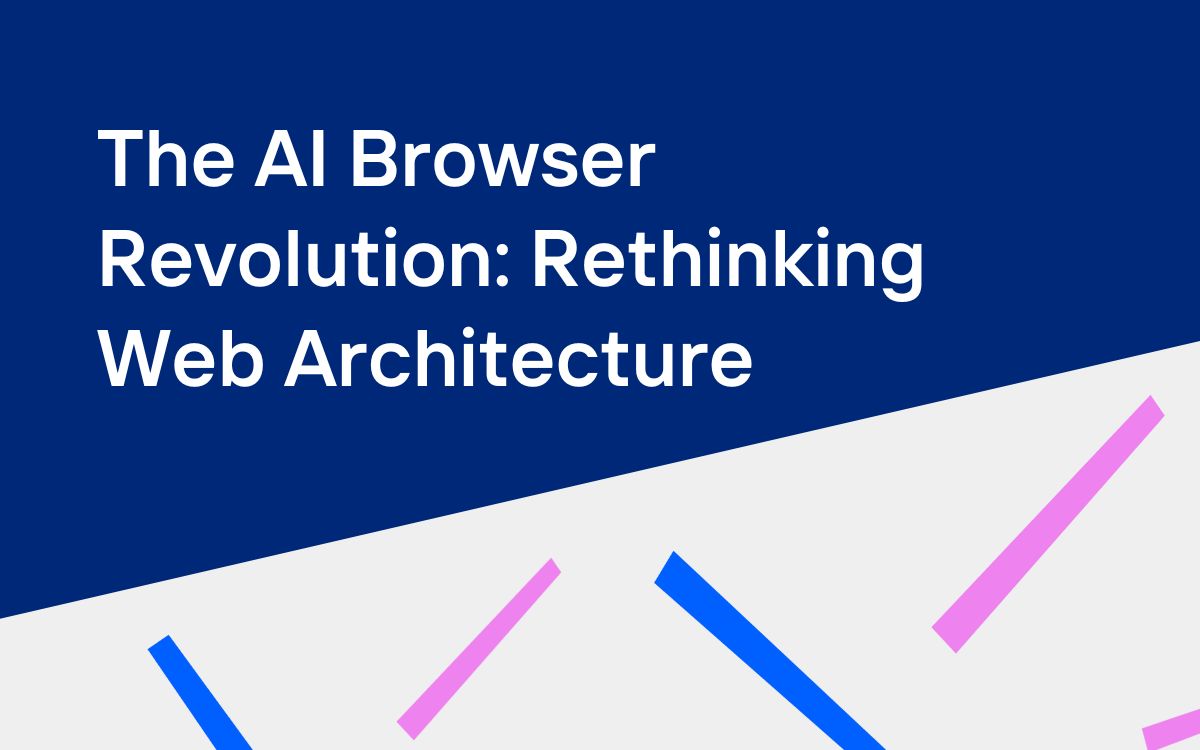This is the second post in our invisible CAPTCHA series. In our first post, we explored how AI has fundamentally broken the traditional puzzle-based verification model and why invisible systems represent the evolution of human verification. Today, we examine why legacy CAPTCHA vendors struggle to make this transition successfully.
Why Legacy Vendors Can’t Simply “Add” Invisible Protection
Legacy CAPTCHA vendors face a fundamental mismatch between what they’ve built and what invisible verification truly requires.
-
Architectural debt: Systems designed to serve puzzles weren’t built for the millisecond-response and precision of invisible protection.
-
The “maybe” crutch: Traditional CAPTCHAs avoided hard decisions by handing uncertain cases back to the user through puzzles.
-
Scoring overconfidence: Even when marketed as “invisible,” many legacy solutions still rely on 0-1 risk scores, pushing the burden of interpretation onto customers.
-
Time pressure: With puzzles, vendors had 20+ seconds to inspect the browser. Invisible systems must classify traffic in milliseconds.
-
History repeating: Just as Web Application Firewall vendors misapplied static security to dynamic bot problems, CAPTCHA vendors are trying to retrofit old models to new challenges.
You Can’t Retrofit Confidence Into Uncertainty
The rise of AI as a puzzle-solving superuser — outperforming humans with 85–100% accuracy — has collapsed the puzzle-based CAPTCHA model. Yet many vendors cling to architectures designed for a world where uncertainty was acceptable.
The divide between those who “get” invisible protection and those who don’t isn’t just technical — it’s philosophical. Puzzles gave vendors a convenient way out: when unsure, they simply put the burden back on the user to prove themselves. Invisible systems can’t do that. They must decide, confidently and instantly, whether to allow or block.
That kind of confidence can’t simply be bolted onto a system designed to hedge.
Built for Puzzles, Stuck with Puzzles
The challenge facing traditional CAPTCHA vendors isn’t just adding a new feature, it’s rebuilding their entire detection philosophy. Systems optimized for puzzle-serving have fundamentally different architectural requirements than those designed for invisible protection.
Traditional vendors built their infrastructure around serving visual challenges and validating puzzle solutions. Their telemetry collection, ML models, and data processing were all optimized for puzzle-interaction patterns. But puzzles also afforded vendors a critical luxury: time. When users spend 20+ seconds solving challenges, vendors have ample opportunity for thorough browser inspection. Invisible systems must complete their entire classification process in milliseconds, creating enormous pressure to design fast, effective client-side inspection processes.
Perhaps most critically, traditional vendors never needed advanced client-side protection because puzzle interactions provided extended analysis windows. Purpose-built invisible systems require virtual machine protection, real-time cryptographic validation, and advanced anti-reverse engineering, all operating within millisecond timeframes. Retrofitting this protection onto existing JavaScript detection code is exponentially more difficult than building it in from the ground up.
Performance Matters: Traditional vs. Invisible CAPTCHAs
One of the starkest differences between traditional and invisible CAPTCHAs is performance — and its impact on user experience.

As shown above, traditional CAPTCHAs add 3–42 seconds of human overhead to a process that could otherwise complete in 215 milliseconds. Invisible CAPTCHAs are up to 199x faster, providing the same level of security without punishing your users with unnecessary friction.
This isn’t just a technical detail, it’s a competitive advantage. Faster, more seamless experiences improve conversion rates, reduce abandonment, and reinforce trust.
The Comfort of “Maybe”
Traditional CAPTCHAs didn’t just collect data. They provided vendors with a psychological safety net. Uncertain about whether a session was human or bot? Show a puzzle and let the user prove themselves. This “maybe” option became fundamental to how these systems operated, but it was never really about security.
The puzzle served as a convenient way to avoid the hardest part of bot detection — making confident classifications. Instead of building systems that could definitively distinguish human from automated behavior, vendors could defer to human problem-solving whenever their confidence wavered. The cognitive load imposed on users was essentially a tax on uncertainty.
Every time a traditional CAPTCHA appears, it represents a moment where the vendor’s classification system wasn’t confident enough to make a binary decision. The user experience suffers not because the system detected a bot, but because the system couldn’t confidently determine what it was dealing with.
Invisible systems expose this philosophical flaw by removing the safety valve entirely. Without puzzles to fall back on, vendors must build systems capable of making confident binary decisions — allow or block, with no middle ground.
Still Asking Customers to Decide?
Even worse, some legacy vendors now market “invisible” CAPTCHAs, but still rely on scoring systems that push the decision back to you.
When a vendor gives you a risk score like 0.7 and asks you to set thresholds, they haven’t actually solved the problem. They’ve simply shifted their uncertainty to you.
Purpose-built invisible systems don’t work that way. They make confident, autonomous decisions because they’re designed to operate without constant tuning or second-guessing.
We explained this in our guide to CAPTCHA alternatives: invisible systems should remove friction for users and operational overhead for your team, not just hide the puzzle and hand you more work.
A Familiar Mistake: The WAF Parallel
This vendor transition struggle isn’t unique to the CAPTCHA market. Web Application Firewall (WAF) vendors made remarkably similar mistakes when they attempted to add bot detection capabilities to their platforms.
WAF vendors approached bot detection like traditional web application security — with static rules, signature matching, and threshold-based blocking. They built “bot protection modules” assuming automated traffic would behave like known vulnerabilities with predictable patterns. But bots aren’t SQL injection attempts. They’re actively adaptive adversaries that continuously evolve their techniques.
Both WAF vendors and traditional CAPTCHA vendors made the same fundamental error — they didn’t architect for continuous adversarial adaptation. They applied stationary solutions to nonstationary problems, assuming they could solve bot detection with the same approaches that worked for other security challenges.
Invisible CAPTCHAs Designed for Adversaries
The vendors succeeding in invisible human verification share a crucial characteristic: they architected their systems from the ground up for adversarial environments. This “adversarial engineering” approach represents a fundamentally different philosophy from traditional security thinking.
Purpose-built invisible systems assume that adversaries will continuously analyze, reverse-engineer, and adapt to detection methods. Every architectural decision is made with the expectation that determined attackers will attempt to circumvent it. This creates systems designed for perpetual evolution rather than static deployment.
Systems built for adversarial environments must make confident binary decisions without exposing scoring mechanisms that adversaries can analyze and game. This requires sophisticated machine learning models trained on high-integrity data, protected by advanced anti-reverse engineering techniques.
The most critical difference is how purpose-built systems protect telemetry collection. Advanced client-side protection ensures that classification models receive authentic behavioral data rather than synthetic telemetry generated by bot operators.
What to Look For in an Invisible CAPTCHA Vendor
The invisible CAPTCHA market is drawing a clear line: vendors who understand adversarial engineering, and those stuck in puzzle-era thinking.
If a vendor asks you to interpret scores or tune thresholds, they’re handing you their uncertainty.
If they offer a system that operates confidently, autonomously, and invisibly — that’s a sign they’ve built it for this challenge.
The transition from traditional to invisible CAPTCHAs isn’t just about removing puzzles — it’s about moving from uncertainty-based to confidence-based architecture. Organisations that recognise this distinction will choose solutions that protect users without sacrificing experience — or offloading risk to their own teams.



